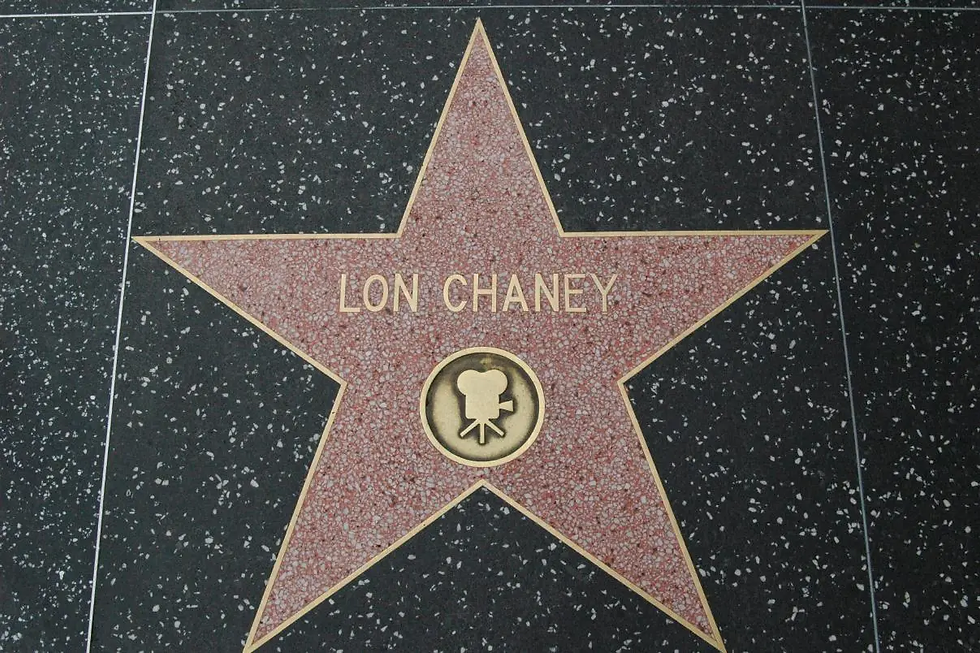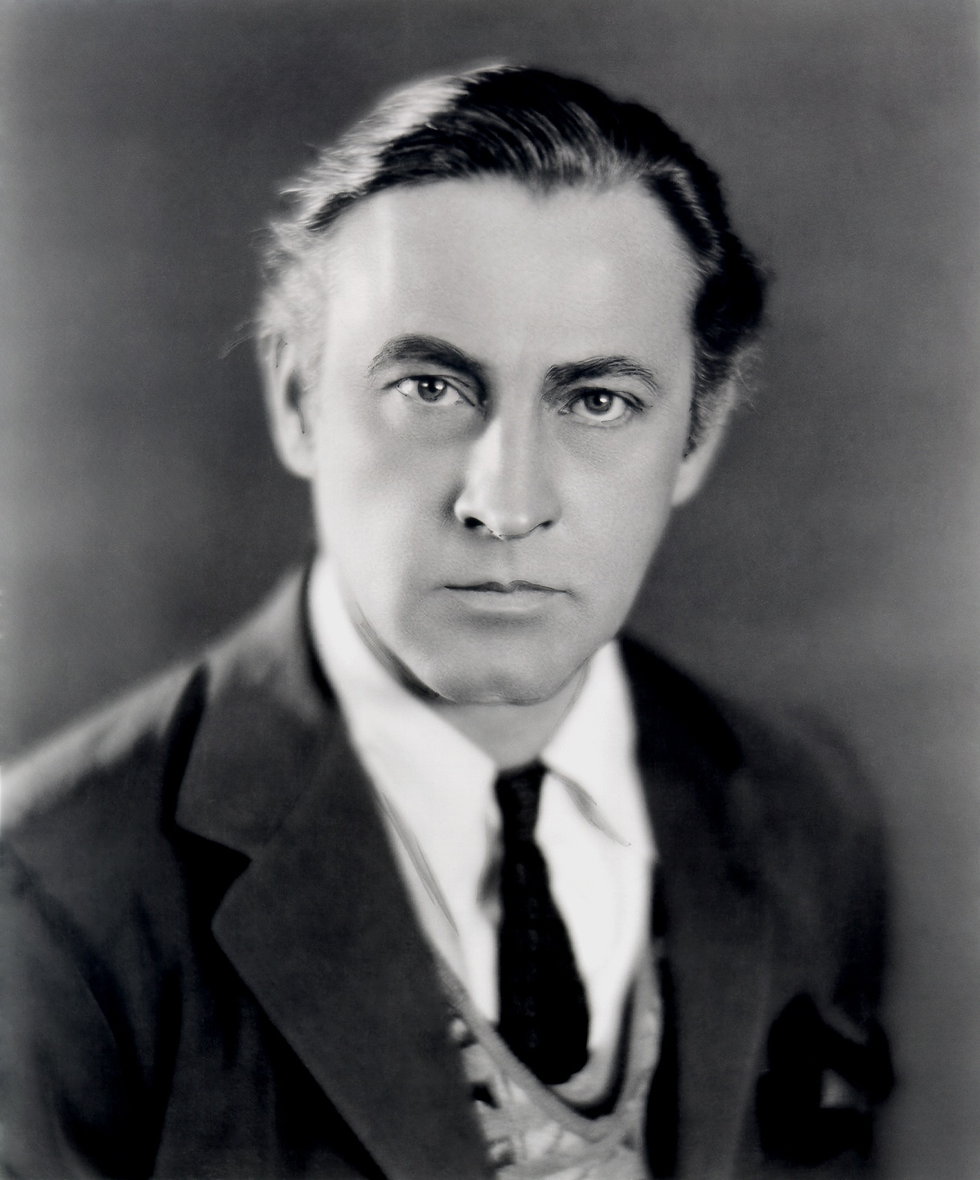Lon Chaney
- SilentCinemaSchool

- Sep 24, 2022
- 5 min read
Lonnnnnng before there was a Johnny Depp playing the parts of Edward Scissorhands, Willy Wonka, Captain Jack Sparrow and, of course, Tonto – there was a silent movie star who singlehandedly played (and created the makeup for) an extreme amount of characters. Also known as “The Man of a Thousand Faces”, we present to you the incomparable genius of the one and only Lon Chaney, Sr.

1883 – 1930
IMDb: Lon Chaney - IMDb
Lon was born in Colorado Springs, Colorado to deaf parents, one of 4 Chaney children. From a young age, Lon learned to communicate with his parents through facial expression and gestures, paving the way for his future career as an actor. As a teen, Lon got involved with theatre and worked as a prop boy at a local Opera House. He made his theatrical debut at age 19.

Little Lon (standing), with his older brother (circa 1890)
As a young man, Lon met a singer named Cleva Creighton, and eventually they got married. The pair traveled and performed together, and they had a son named Creighton Chaney (later changed to Lon Chaney, Jr.). The family settled in California in 1910. Unfortunately, their marriage was problematic and in 1913, Cleva attempted to commit suicide by drinking poison in the wings of the stage at the theater where Lon was working. She survived, but there was permanent damage to her vocal chords, thus ending her singing career. Lon filed for divorce and custody of his son, which he was awarded.

The magician and his case of tricks!
Back in the 1910’s, it was detrimental to a stage actor’s career to have a personal tragedy become a public scandal, so Lon was somewhat forced to abandon his theatre career. So what’s a newly single dad with no job to do? Become a movie star, of course! Starting out as an extra, Lon quickly gained popularity, and became a prominent actor with Universal. Lon’s extensive experience and talent with the special effects makeup used on the stage gave him a distinct advantage over many other actors. Remember, actors did their own makeup in those days! He could transform himself into any unusual character they wanted – and he did it extremely well. In 1917 he approached a studio executive, asking for a raise. The executive’s response?
"You'll never be worth more than one hundred dollars a week."
We have to wonder how this executive enjoyed tasting his own shoe when Lon was starring in major productions like “The Hunchback of Notre Dame” (1923) and “The Phantom of the Opera” (1925)!

What makes The Phantom, a phantom??
Well in any event, Lon left Universal for a time due to their stinginess, and in 1919 he hit the jackpot. Playing “The Frog” in the Paramount Pictures film, “The Miracle Man”, Lon was able to show the world what he could accomplish with makeup – and the world was in awe. The film grossed $2,000,000.00 (USD) a the box office and received praise from the critics. Lon was THE character actor of his time, and Universal (along with everyone else) had no choice but to recognize it.

As Quasimodo (the Hunchback of Notre Dame), Lon reportedly wore a false "hunchback" that weighed 50 lbs.!
The 1920s were a great period for Lon. Becoming known as “The Man of a Thousand Faces” and having complimentary jokes floating around Hollywood (“Don’t step on that spider! It might be Lon Chaney!”) were clear indicators of his success. However, Lon was not easily swayed by his own fame. He was notorious for giving few interviews, rarely attending premieres or big events, and often saying that “Between pictures, there is no Lon Chaney”. This was mostly for publicity, to keep audiences intrigued. Smart move, Lon.

One of Lon's most sought-after lost films, "London After Midnight" (1927)
Off-camera, Lon enjoyed fly-fishing, camping with his second wife and entertaining their few close friends at their home in Beverly Hills. He was known for being very helpful to new actors and supportive to the crew on the studio lot.
Actor and good friend Wallace Beery once said:
“[Lon] was the one man I knew who could walk with kings and not lose the common touch,”
In 1925, Lon wrote an autobiographical article for “Movie” Magazine, which touched on the characters he preferred to play:
"I wanted to remind people that the lowest types of humanity may have within them the capacity for supreme self-sacrifice. The dwarfed, misshapen beggar of the streets may have the noblest ideals. Most of my roles since The Hunchback, such as The Phantom of the Opera, He Who Gets Slapped, The Unholy Three, etc., have carried the theme of self-sacrifice or renunciation. These are the stories which I wish to do."

A criminal disguised as an old lady? Yep, that's the part for Lon! "The Unholy Three" (1925)
When the sound age swept the Nation, Lon transitioned well and completed one film, a sound version of his previous silent, “The Unholy Three” (1930), which showed that not only did he have a thousand faces, he also had a thousand voices! Lon used 5 different voices for the characters in the film, and signed a sworn statement that the voices of the 5 key characters were, in fact, his own. In addition, Lon was also a gifted dancer, comedian and singer! Maybe they should have nicknamed “The Man of a Thousand Talents”, instead...

Seven weeks after the film was finished, Lon passed away at the age of 47 due to a throat hemorrhage. He had previously been diagnosed with pneumonia and bronchial lung cancer, which had been made worse by artificial snow getting lodged in his throat during the filming of “Thunder” (1929). He was survived by his second wife, former actress Hazel Hastings, and their son, Lon Jr. – who followed in his father’s footsteps and became a successful character actor! Lon was interred at Forest Lawn Memorial Park in Glendale, CA. In accordance with his will, his crypt remains unmarked. Out of the 157 films Lon made, 102 are considered “lost”. One can only hope that more of these will be re-discovered in the years to come!
Screenwriter Ray Bradbury once said of Lon:
"He was someone who acted out our psyches. He somehow got into the shadows inside our bodies; he was able to nail down some of our secret fears and put them on-screen. The history of Lon Chaney is the history of unrequited loves. He brings that part of you out into the open, because you fear that you are not loved, you fear that you never will be loved, you fear there is some part of you that's grotesque, that the world will turn away from."
In an industry that is prone to forgetting your name after 5 minutes of downtime, that is quite a legacy! Have a look at "The Hunchback of Notre Dame" (1923) below!
References:


.png)



Comments